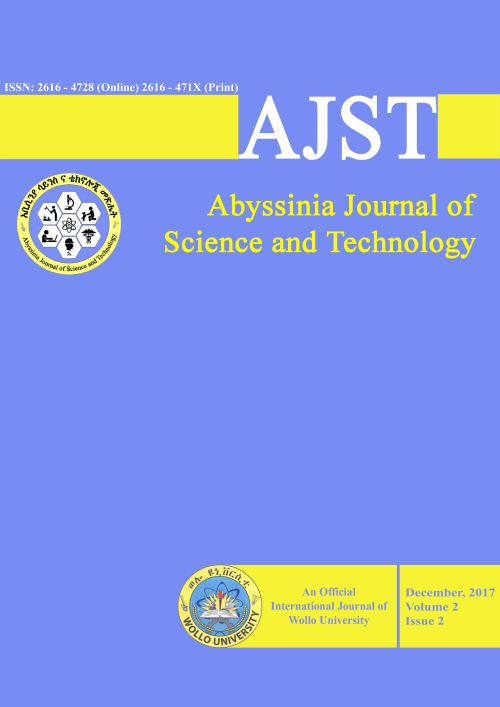Main Article Content
Survey of Septoria Leaf Blotch (Septari atritici Roberge in Desmaz) on Wheat in North Gondar, Ethiopia
Abstract
Wheat, an important cereal crop of Ethiopia facing challenges in production by lack of appropriate agronomic practices, weather uncertainties, weeds, insects and diseases outbreaks. Septoria leaf blotch a common disease inflicts heavy qualitative and quantitative losses. The objectives were to assess the distribution, incidence and severity of septoria leaf blotch and its association with biological and physical independent factors in North Gondar Ethiopia. A total of 113 fields in 2014 and 2015 years were randomly assessed for wheat diseases. Disease incidence and severity were described statistically and the association of septoria disease incidence and severity with independent variables was analyzed using logistic regression. The mean incidence and severity of Septoria tritici in North Gondar during the assessment years was 34.7% and 17.5%, respectively. The mean highest severities were recorded at flowering, on local varieties, on previously legume sown, brown cambisol soil of poorly managed fields. Variables such as district, variety, growth stage, altitude, previous crop, and soil type and field management were significantly associated with the septoria incidence. Similarly, all the variables were significantly associated with Septoria tritici severity in logistic regression model. Other wheat diseases observed were rust (yellow rust, stem rust and leaf rust), loose smut, head blight and premature drying. Results indicate that septoria leaf blotch is a major biotic constraint in the study area and proper field management, in addition to improved wheat varieties, can reduce the risk of septoria leaf blotch. Furthermore, disease management measures suitable for small-scale wheat growers in study area are required.







